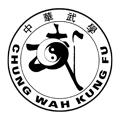CONTENTS AND REPERTOIRETraditionally, lion dance performers were elite martial artists. Combining music and dance, martial arts fundamentals and philosophy, advanced athleticism and military strategy, the specialized training of the martial artist is essential in order to perform the classical lion dance. In Chinese martial arts, the lion dance is known as the ‘Dance of the Sacred Head’. While the procedure of ‘getting the greens’ may have had anti-political symbolism in previous times, today this step is seen as an auspicious highlight of the dance. The word for money (qian) sounds like the word for greens. The lion in obtaining the lucky greens, then spreading them out represents fortune overflowing and abundant prosperity. Rather than a political message, the protocol and procedure of the lion dance is now seen as a technical challenge for the players. Physical and mental fortitude, combined with endurance, specialized skill, entertaining animation and teamwork, the lion dance represents the ideal of kung fu—success gained through hard work, and the achievements made by working together. The dance is performed by two dancers in the head and tail of the lion costume, and a team of instrument players, including one drum, gong and multiple cymbal players. Occasionally, the lion is seen accompanied by smiling Buddha with a large pink and blue head, carrying a fan. This figure serves as a jolly playmate and guide for the lion. The team works together to perform the dance with style and flare. When all is ready, the lion starts to move according to the rhythm of the drum: fast, slow, light, heavy, the head and tail shaking, brushing their toes, scratching the fur and so on. The dancers animate the lion, imitating movements of waking from slumber, grooming, searching for food, eating and playing. Elite teams improvise within established formats, often using props to enhance the spectacle. The better the team, the more complicated and stylized their execution. Standard routines include ‘lion climbs the pagoda’, ‘crossing the heavenly bridge’, ‘lion crosses three hills’, ‘lion descends the mountain’, ‘lion exits the cave’, ‘lion descends the mountain’, ‘tumbling lion’, ‘lion spits out the pearl’, ‘lion explores the sea’, ‘lion crosses the broken bridge’, ‘lion walks on posts’, and ‘lion plucks the greens’. The dancers must possess excellent physical conditioning as well as team work and a sense of theatrical drama to bring out a truly excellent performance. Many special skills are required for these routines. Certain teams specialize in a small repertoire, striving for virtuosity within their speciality. The specific type of routine used is determined by the type of puzzle presented to the lion, specific dance strategies involved and the specific occasion and social setting; for example, business inauguration, festive celebration or blessing of a home. |
Contents and Repertoire
You are here:
- Home
- Contents and Repertoire

